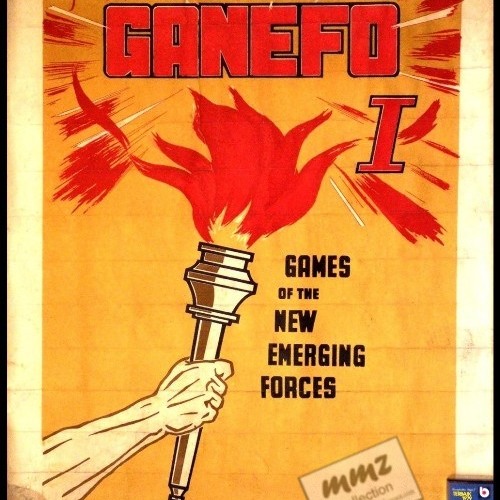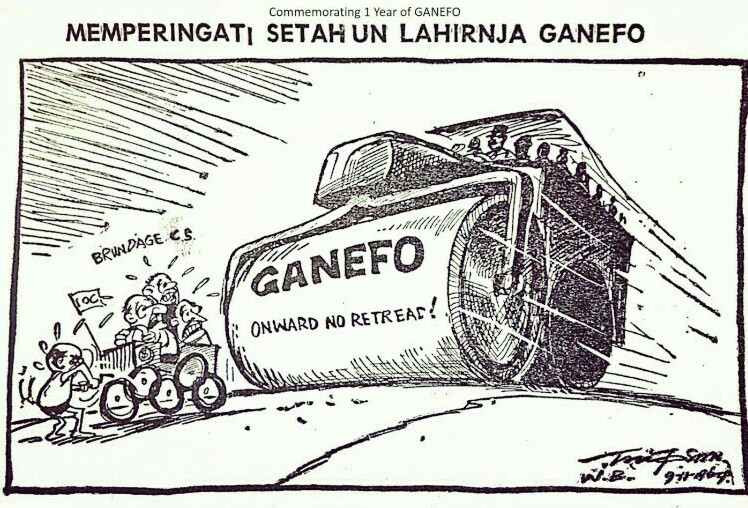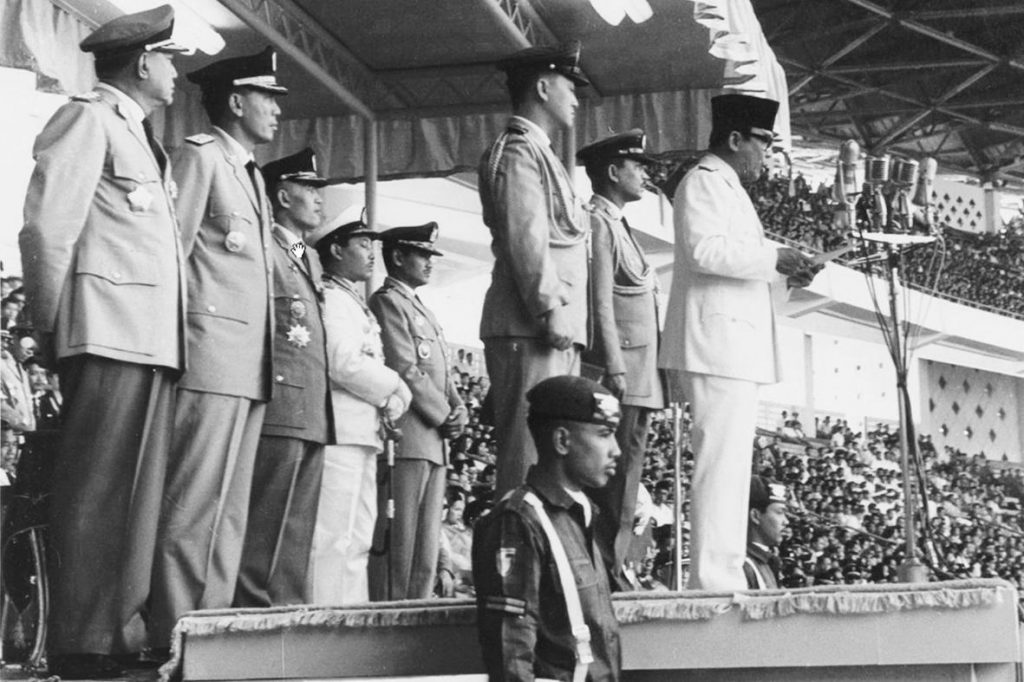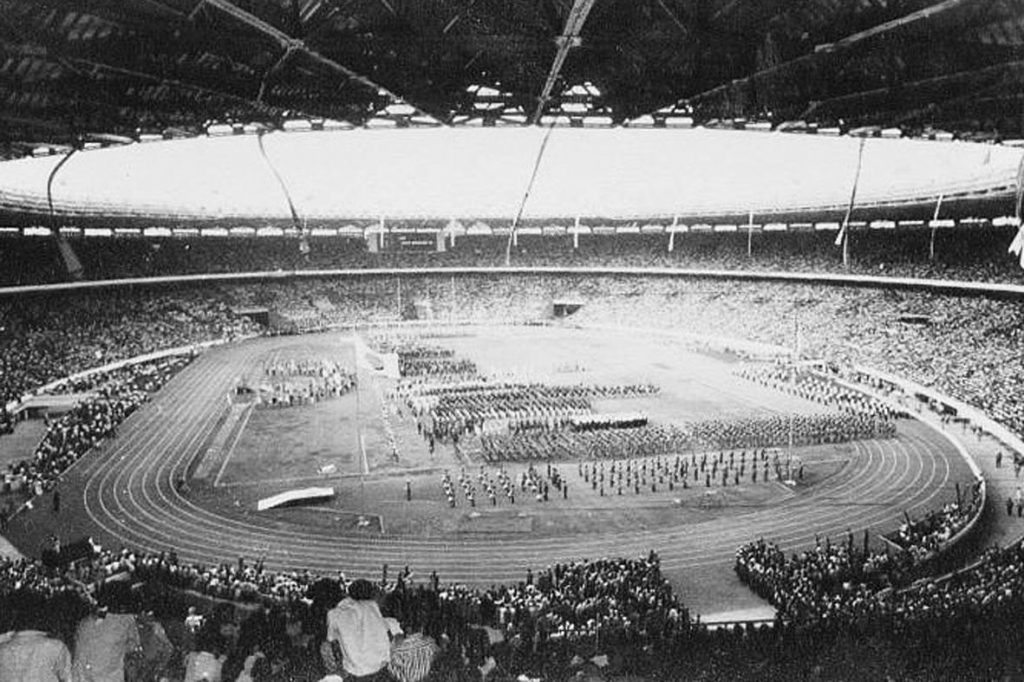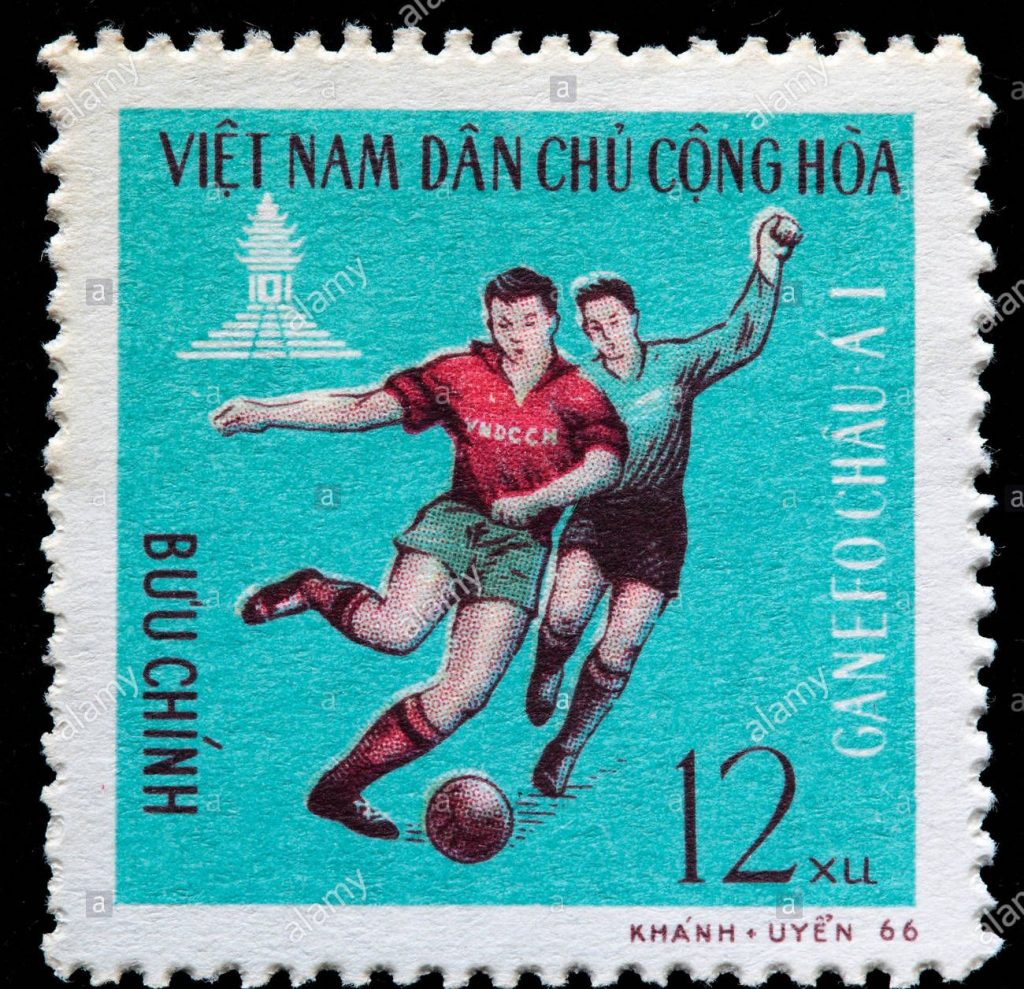Introduction to GANEFO
The Games of the New Emerging Forces (GANEFO) was a sports event created by former Indonesian president Sukarno in 1963 as a retaliation to the Olympic Games. The event was created with propaganda in mind and invited other nations of the “emerging nations”, mostly newly independent socialist countries such as China, North Korea, and North Vietnam that opposed imperialists and colonialists such as the United States.
This may sound similar to the Friendship Games hosted by the Soviet Union in Moscow because it is. The Friendship Games was the Soviet’s way of creating their own Olympic Games after they decided to boycott the 1984 Summer Olympics in Los Angeles because of political tensions in regards to the Cold War.
You could say that GANEFO gave the USSR the idea of running their own Olympics because Indonesia did it 21 years prior.
GANEFO’s anthem used in Jakarta, Indonesia 1963
The beginning of GANEFO
In 1962, Jakarta in Indonesia hosted the fourth Asian Games in which Taiwan and Israel were not permitted to join. Indonesia did not recognise Taiwan as country, and Indonesia’s Islamic views conflicts with Israel’s and both nations to this day still have no formal diplomatic ties.
The International Olympic Committee (IOC) response to this was to indefinitely suspend Indonesia from all IOC events such as the Winter and Summer Olympics. This was the very first time the IOC had chosen to directly enforce a suspension to a nation.
With politics heavily influenced, President Sukarno wanted to create this unique sporting event to give socialist countries and newly independent nations an opportunity to show and voice their solidarity. The IOC condemned this event as they are incredibly strict with allowing politics into sports.
Posters and propaganda used to promote Indonesia’s new international sporting events and to criticise the IOC. GANEFO’s motto: “Onward! No Retreat!” Or “Forward, Never Backward!”
Sukarno responded saying the IOC contradicted themselves as they did not allow the People’s Republic of China or North Vietnam in as members of the committee as he believed this was also politically backed. The IOC later announced that athletes attending GANEFO would be ineligible to participate in the Olympic Games, the next being held in 1964 hosted by Tokyo in Japan.
This led most nations who wanted to participate in GANEFO to not send their top tier athletes to compete or allowed their own Olympic Committee to be involved. Instead, these nations sent their best pro-amateur athletes so their best athletes would not risk losing out in competing in the Olympic Games.
1st GANEFO – the first event
The first GANEFO event was held in Jakarta, Indonesia from the 10th to the 22nd of November, 1963. 2.700 athletes from 51 countries attended and competed in 21 men’s and 12 women’s athletic events.
One of the most unusual participants was Japan. They allowed their pro-amateur athletes to attend the first GANEFO event to show good sportsmanship as they would be hosting the 1964 Summer Olympics. However, their efforts to participate led to a light threat from the American IOC President at the time, Avery Brundage. Nothing came of it though.
China at the time was not competing in the Olympics as they were protesting against Taiwan’s involvement in the IOC. This allowed China to send their very best athletes to compete in GANEFO. China won all but three of the women’s events and eleven gold medals in the men’s category, with a total victory of 171 medals in total.

President Sukarno at the opening ceremony in Jakarta 
Opening ceremony in Jakarta
North Korea shocked the world as they were the second most successful nation to compete. Both China and North Korea were excluded from the previous Asian Games, including the Jakarta Games held a year earlier. The DPRK had not yet entered the Summer Olympics but did so for the first time the following year in Tokyo. North Korea won four gold medals, led by a triple gold medal performance by Sin Kim-dan – a track and field athlete.
At third place was the United Arab Republic (combining Egypt and Syria), which swept the men’s distance track events, and won four gold medals in separate events. The USSR were one of the many nations to send their ‘second best’ athletes and had a total medal tally of 57 medals.
The following countries competed in the 1st GANEFO event:
Afghanistan, Albania, Algeria, Argentina, Belgium, Bolivia, Brazil, Bulgaria, Burma, Cambodia, Chile, Ceylon, Cuba, Czechoslovakia, DPR Korea, the Dominican Republic, Finland, France, the German Democratic Republic, Guinea, Hungary, Indonesia, Iraq, Italy, Japan, Laos, Lebanon, Mexico, Mongolia, Morocco, the Netherlands, Nigeria, Pakistan, Palestine (then divided to Jordanian West Bank and Egyptian Gaza Strip), People’s Republic of China, the Philippines, Poland, Republic of Mali, Romania, Saudi Arabia, Senegal, Somalia, Thailand, Tunisia, Soviet Union, North Vietnam, the United Arab Republic, Uruguay, Yugoslavia, and a team representing “Arab Palestine.”
2nd GANEFO – the second event but the 1st Asian GANEFO
The second GANEFO event was to be held in Cairo, Egypt in 1967 but were cancelled for political reasons and wars. The hosting country was then awarded to Phnom Penh, Cambodia, and it was decided the games would focus on participant countries being from the extended Asian region as the facilities and infrastructure in Cambodia could not accommodate an event large enough for 50 or more countries.
Prince Sihanouk opened the games on the 25th of November to the 6th December, 1966 and welcomed 2000 athletes from 17 countries including Cambodia, Ceylon (Sri Lanka), China, Indonesia, Iraq, Japan, North Korea, Laos, Lebanon, Mongolia, Nepal, Pakistan, Palestine, Singapore, Syria, North Vietnam and Yemen to compete in 21 men’s and 12 women’s events.
Opening Ceremony of GANEFO in Phnom Penh, Cambodia. Similarities shard with North Korea’s Mass Games
The events served as a counterpart to the athletics at the 1966 Asian Games, which featured largely Western-allied Asian nations such as Australia, Malaysia, Singapore, South Korea and the territory of Hong Kong.
China again dominated the competition, winning 19 gold medals. North Korea second again with 10 gold medals. Cambodia, North Vietnam, and Syria each won one gold medal each.
The most successful athlete of the event was Sin Kim-dan, the North Korean track and field athlete who won the 200 metres, 400 metres and 800 metres titles. She managed to successfully defend all her GANEFO 1963 titles.

Vietnamese stamp of GANEFO in 1966
3rd GANEFO – 2nd Asian GANEFO – never happened
The third GANEFO event, which again was focused on the extended Asian Region making it the 2nd Asian GANEFO were to be hosted in Beijing, China in 1970. At the time China was struggling through the Cultural Revolution and the PRC decided to drop out of the opportunity of hosting the games. It was then awarded to Pyongyang; North Korea and the games would be opened by North Korea’s leader Kim Il Sung. These plans did not go ahead.
Soon after the first GANEFO event, the IOC allowed Indonesia to compete in the Tokyo 1964 Summer Olympics and interests from participating nations faded. GANEFO was never to be heard of again in the international community.
However, GANEFO lives on in Indonesia, and the 10th of November is celebrated as GANEFO day with sports competitions held locally and on a much smaller scale.


